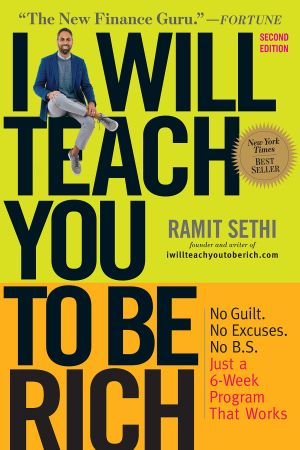Understanding your true returns is the key to making investment decisions that win.
What I Learned From Ramit Sethi’s First Action Step
by Kari Luckett
April 24, 2019 [Sponsored Content]
Tweet
 I’m one of the many Americans trying to get this whole debt-to-savings thing in harmony with one another. I was never really concerned with this until I became employed with a company in the financial sector. I pay my bills on-time every month, but I was never paying more than just above the minimal amount required and I was holding off on paying my student loans because the monthly payments are so high. I basically have a mind-set of “I’ll get to it when I get to it.”
I’m one of the many Americans trying to get this whole debt-to-savings thing in harmony with one another. I was never really concerned with this until I became employed with a company in the financial sector. I pay my bills on-time every month, but I was never paying more than just above the minimal amount required and I was holding off on paying my student loans because the monthly payments are so high. I basically have a mind-set of “I’ll get to it when I get to it.”I Will Teach You to be Rich
Back in April a friend of mine was willing to sit down with me and discuss my finances, credit card bills and the like. After our meeting he suggested I read a book, “I Will Teach You to be Rich,” by Ramit Sethi. You may have heard of him before, he’s been around. I wrote it down knowing I’d likely not read it as I have about 5 books that are half-read sitting on my desk reminding me every day that I shouldn’t start a new one until I finish those. Well, he bought it for me so now I have to read it. After the first few chapters I had some “Ah ha!” moments and now I’m excited to finish it and not live paycheck-to-paycheck.
The book is aimed at those in their twenties who aren’t too far in debt (I hope) and looking to be financially responsible. One-third of Americans don’t pay their bills on time and 56 percent admit they don’t have a budget by which they live by (Source: JumpStart). I’m not trying to be a part of that statistic. The book is created like a 6-week program, breaking down your steps to financial freedom so it’s more feasible. His six weeks of action steps are:
- Week 1- Optimize your credit cards and use them responsibly to build credit
- Week 2-Set up no-fee, high-interest bank accounts
- Week 3- Open a 401(K) and Roth IRA account
- Week 4- Create a conscious spending plan and optimize your spending to make your money go where you want it to go
- Week 5-Automate your financial infrastructure so bills are automatically paid, saved and invested
- Week 6- Learn how to get the most out of the market with very little work
Since I’m only a few chapters in, we’re going to focus on my “Ah Ha!” moments from the content covering week 1 action steps. I already love how he writes in a relaxed, conversational tone and I appreciate how he compares the way people think about money to the way they think about diets-it’s an interesting approach. My first moment of realization is that I have to start saving and investing early. Not should, but HAVE TO (and want to). There’s a little table simplistically explaining how two individuals will have different returns even though they invest the same amount per month with the same interest rate. One individual begins saving at age 25 and invests for 10 years while another individual begins at age 35 and invests for 30 years. The late saver will have almost $50,000 less than the individual who started early. That’s wild to think about, isn’t it? You don’t have to save $100 per month, but aim for something and try to build up to saving more. You will pat yourself on the back in the long run.
“Ah Ha!” Moment #2
I have a right to obtain a free copy of my credit report once a year at AnnualCreditReport.com. I feel like this is something I knew, but it definitely slipped my mind. Knowing your credit score is the first step you should take to building your credit because it gives you a base of where to start when thinking about your next credit card that fits your lifestyle. If you don’t fly often, you won’t get much out of an air miles credit card. The same can be said for a card that rewards in gas perks if you own a bike or those that are designed for everyday purchases, but you got your card strictly for emergency purposes. Ramit also insists you get a card without all those extra fees, one of his six commandments to credit card ownership.
As a side-note, I also have an account with Mint.com. This free credit monitoring service allows you to link up all of your accounts in one place. It keeps you updated on changes to your credit score in addition to other alerts.
“Ah Ha!” Moment #3
Simple, long-term investing is what works, not fancy buying and selling. This was only covered briefly and I’m hoping he will come back to it once I’m further into the book. He made a good analogy that “you don’t have to be Iron Chef to cook a grilled-cheese sandwich.” I feel more comfortable about the thought of investing because I don’t have to be the smartest person in the room, I just need to start early. He also explains that buying and holding on to your investments will win in the long run every time and you should analyze your investments once about every 6-12 months. Phew, I always thought investing would be extremely complicated with constant monitoring (I have a friend who’s always watching the stock market and I hear those little bells go off every morning).
 Kari Luckett
Kari LuckettKari Luckett writes about all financial topics for Compare Wallet and is the content strategist for Compare Cards. |




